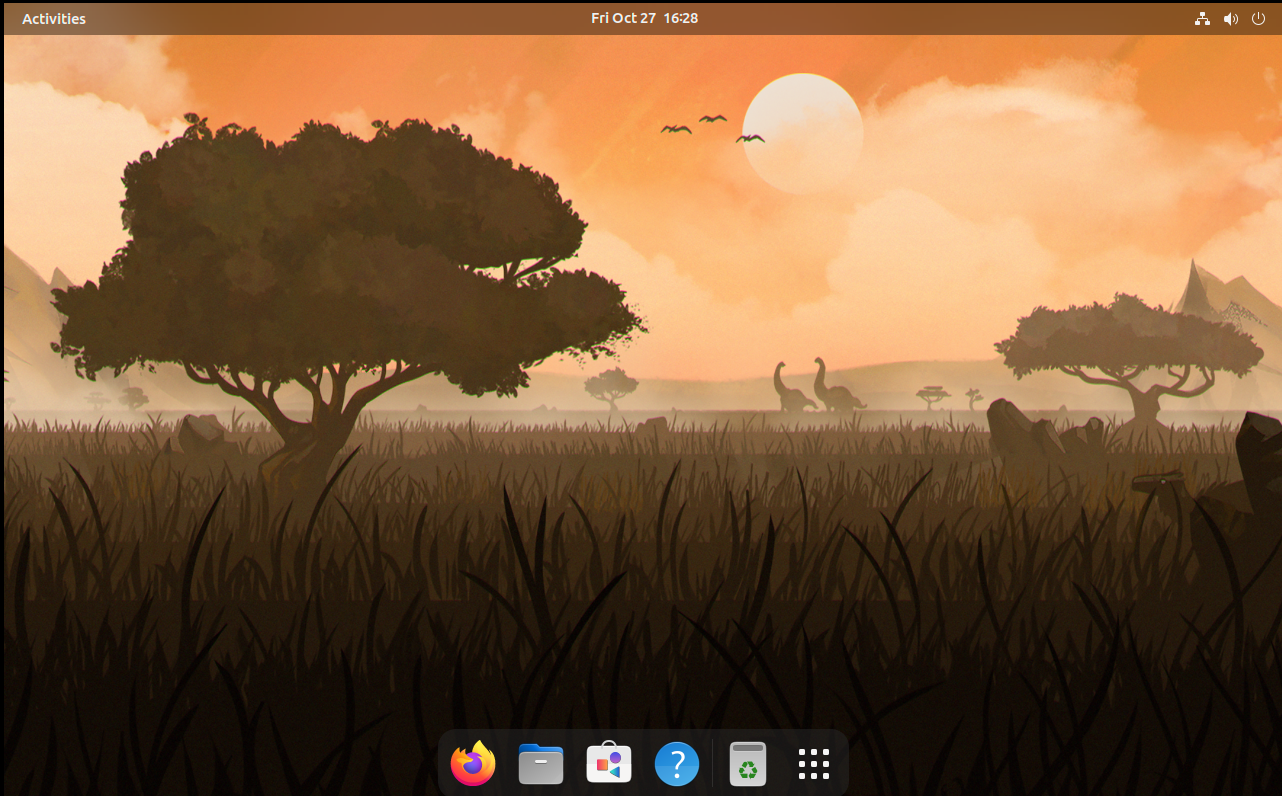- cross-posted to:
- linux@lemmy.zip
What’s the Linux desktop for the playful developer? 🤔
UwUbuntu
deleted by creator
LFS
YiffOS
Is that a fork of NixOS?
I don’t know but non-serious developers use Slackware.
Among OS
gentoo
NixOS according to my local fetish community.
deleted by creator
deleted by creator
Are other distros not serious? I don’t understand what this is.
You’re just not cloud-native enough to understand how revolutionary it is to run GNOME on Fedora.
We are really experiencing a cloud native generation. These Zoomers don’t even know how life was without a cloud over their heads.
Just a bad attempt at marketing.
They should feel shame.
deleted by creator
Everybody knows Linux is primarily used and developed (?) by moms who play FarmVille in terminal.
deleted by creator
Lmao I first read that as
Yet another Newly Jank ass Linux Distro
uses the GNOME interface
yeah thats a no from me.
You’re just not a serious developer 😒
Plus its just running off Fedora? Easy no.
How did they manage to just take the worst of both and put them together?
It’s a cultural thing at this point.
They just have a different culture than us.
🥱
What a shitty tagline. What have I been doing these past few years, lol?
Ahh you must be a frivolous developer
Or a funny one.
Hello, fellow goofy developer.
Not being serious enough thats for sure
A serious desktop got serious developers who are seriously serious about their serioucity
Are you cereal?
I can’t take that much seriousness.
Seriously?!
Damn, that sounds serious.
as serious as a heart attack
I don’t get it. What’s the spirit of ubuntu? Is the underlying OS based on ubuntu instead of fedora?
What’s the actual difference to fedora silverblue?
Half the answer to “why did you make your own linux?” is that it’s awesome being able to revert back to the original fedora OS.
Because it follows a cloud-native approach, the end user has the flexibility to rebase back to the stock Fedora or any Universal Blue image. It’s more like having someone install, configure, and maintain a polished Fedora setup for you.
And the other half doesn’t provide any info either
Bluefin utilizes Fedora’s OCI features to compose and build an OS image. This process is overseen by a well-structured community that is committed to automation and sustainability. The end result is akin to a configuration management tool like Ansible or Salt, but without the typical challenges associated with maintaining a custom distribution.
Yeah, they don’t have a clear mission statement to explain the delta of “why does this exist, and what problems does it solve”.
I think it boils down to: “because we can”. “We can automatically build our own setup on github and that’s what we do”
Installing tailscale, zsh, fish, vscode, extension manager, codecs, etc. out of the box isn’t enough for a new distro. Especially because you break the signing of fedora by doing so.
out of the box isn’t enough for a new distro.
I’m a bit surprised that they mentioned “distribution” on the Bluefin website, as the Universal Blue site (the base project behind Bluefin) explicitly mentions not being a distro - and I know that Jorge tends to be very clear that they’re not building a distro:
This isn’t a distribution, you can always rebase back to Fedora without reinstalling. This is a unique relationship between upstream and downstream that is popular in cloud, but still new to the Linux desktop. “Custom images” seems to be a decent place to start since that’s what people call them in cloud.
much cloud, very native, wow
What’s the actual difference to fedora silverblue?
Hi! Co-maintainer here, you can find the differences in the github repo: https://github.com/ublue-os/bluefin
And there’s a doc page going over it here: https://universal-blue.discourse.group/docs?topic=41
If you have any other questions I’d be happy to answer them!
Hi! Co-maintainer here, you can find the differences in the github repo: https://github.com/ublue-os/bluefin
I checked the github page you link and can find no differences listed, just three bullet points that appear to have be written by a PR team. You say an Ubuntu Desktop experience melded with Fedora Silverblue. Don’t you mean GNOME? Ubuntu isn’t a desktop environment, it’s a Linux distro. GNOME is the desktop environment. That seems like an embarassing blunder in your copy when you claim to be building a distro for “serious” developers.
If it weren’t open source, I’d think this was a scam. Weird choice.
IIRC, Bluefin uses the GNOME extensions that Ubuntu uses - so yes, GNOME in the same way that the current version of Pop!_OS is GNOME + their own extensions.
Instead of linking to articles full of buzz-words, can you explain what’s the difference between this distro and Fedora Silverblue?
I’m guessing the “spirit of Ubuntu” means they took Silverblue and preconfigured some stuff.I linked to it, here it is again: https://universal-blue.discourse.group/docs?topic=41#features-9
And the previous link was directly to the source code of the image.
Tbo, I lost interest in it.
I’ve spend a good amount of time on it trying to figure out what the project is about. Even after clarifying the confusion and multiple people asking for clarification from your side and multiple upvotes, there’s nothing from your side. You reference to something that has been saying nothing for many people.
You didn’t even clarify the magical wonders of ubuntu in your project. I kind of feel insulted if I think properly about it.
Delete following part of your post
Bluefin
A familiar(ish) Ubuntu desktop for Fedora Silverblue. It strives to cover these three use cases:
For users it provides a system as reliable as a Chromebook with near-zero maintenance, with the power of Ubuntu and Fedora fused together. For developers we endeavour to provide the best cloud-native developer experience by enabling easy consumption of the industry’s leading tools. These are included in dedicated bluefin-dx and bluefin-dx-nvidia images. For gamers we strive to deliver a world-class gaming experience via Flathub or bazzite-arch “Evolution is a process of constant branching and expansion.” - Stephen Jay Gould This image heavily utilizes cloud-native concepts.
GNOME Software with Flathub: Use a familiar software center UI to install graphical software System designed for automatic staging of updates If you’ve never used an image-based Linux before just use your computer normally Don’t overthink it, just shut your computer off when you’re not using it Should I trust you? This is all hosted, built, and pushed on GitHub. As far as if I’m a trustable fellow, here’s my bio. If you’ve made it this far, then hopefully you’ve come to the conclusion on how easy it would be to build all of this on your own trusted machinery. :smile:
The difference between silverblue and your image is that silverblue is signed by fedora and yours isn’t. There’s no reason for anyone but you to use the image. Even if I were to us tailscale and fish, I’d be better off with silverblue.
Here maybe it’s easier if I just paste in the differences:
-
Ubuntu-like GNOME layout.
- Includes the following GNOME Extensions:
- Dash to Dock - for a more Unity-like dock
- Appindicator - for tray-like icons in the top right corner
- GSConnect - Integrate your mobile device with your desktop
- Blur my Shell - for that bling
- Includes the following GNOME Extensions:
-
GNOME Software with Flathub:
- Use a familiar software center UI to install graphical software
-
Built on top of the the Universal Blue main image
- Extra udev rules for game controllers and other devices included out of the box
- All multimedia codecs included
- System designed for automatic staging of updates
- If you’ve never used an image-based Linux before just use your computer normally
- Don’t overthink it, just shut your computer off when you’re not using it
-
Starship is enabled by default to give you a nice shell prompt
-
Solaar - included for Logitech mouse management along with
libratbagd -
Tailscale - included for VPN along with
wireguard-tools -
zshandfishoptional -
Built-in Ubuntu user space
-
<kbd>Ctrl</kbd>-<kbd>Alt</kbd>-<kbd>u</kbd> - will launch an Ubuntu image inside a terminal via Distrobox and your home directory will be transparently mounted for the Ubuntu image to access
-
A BlackBox terminal is used just for this configuration
-
Use this container for your typical CLI needs or to install software that is not available via Flatpak or Fedora
-
Optional ubuntu-toolbox image with Python, and other convenience development tools.
just distrobox-bluefinto get started. To configurejustfollow the guide. -
Optional universal image with Python, Node.js, JavaScript, TypeScript, C++, Java, C#, F#, .NET Core, PHP, Go, Ruby, and and Conda.
just distrobox-universalto get started -
just assembleshortcut to declaratively build distroboxes defined in/etc/distrobox/distrobox.ini -
Refer to the Distrobox documentation for more information on using and configuring custom images
-
GNOME Terminal - <kbd>Ctrl</kbd>-<kbd>Alt</kbd>-<kbd>t</kbd> - will launch a host-level GNOME Terminal if you need to do host-level things in Fedora (you shouldn’t need to do much).
The difference between silverblue and your image is that silverblue is signed by fedora and yours isn’t.
Of course Fedora only signs Fedora images, we sign our own images.
There’s no reason for anyone but you to use the image. Even if I were to us tailscale and fish, I’d be better off with silverblue.
Then use Silverblue! If you don’t understand the features of something then you might not be the target audience!
-
This is the umpteenth time I’ve come across this project but I just don’t get what they’re going for here.
These are just custom images, are they not?
If I wanted Ubuntu I’d use Ubuntu. If I wanted Fedora I’d use Fedora. Maybe I’m not getting it but I wonder how big of a population that’s out there that wants some Ubuntu mixed in with a touch of Fedora and some buzzword salad thrown into the mix.
Sorry, I only know silly, goofy developers. Can’t recommend this to anyone.
Yeah same, I’m a silly goose developer, can’t use this. Sorry!
I prefer to have a minimal linux ditro and install the apps I need.
Can someone tell me the recent hype about immutable distros? What exactly is the immutable part, and why is it attractive?
The base OS is a known unchanging set of bits. Squirt this datastream onto a storage volume and boot to it and you have a known-working system. Then you can futz around with all the self-contained packaged apps you want, and no worries about weird interactions fucking over your whole system.
It’s not for me, but I kinda see the appeal.
It’s when you can’t set the volume to 0% so that everyone around you has to hear how hard you’re working.
The system (the os files to be precise) is only mutable by package manager for specific tasks like updating. It can break certain workflows if the user wants to change system files, because they can’t.
Bonuses from that are security and reproducibility. You can be sure that whatever package you have will look and behave exactly the same as on another device with the same OS. Malware won’t be able to mess around with your OS so trivially as it does on mutable distros.
Interesting. Sounds like DevOps folks would love it. Maybe I’ll look into it more. Thanks!
Immutable, adjective: Unchanging over time or unable to be changed.
From the article: “We want a reliable desktop experience that runs everything, but we’re too lazy to maintain anything. So we automated the entire delivery pipeline in GitHub.”
So, in other words… “Please don’t ever update your system or everything will break”
It means the core OS is isolated from all the functionality in a way that allows you to modularly add all the functionality on top of it in a reproducible, robust way.
In theory. I haven’t actually dug into any of them personally.
“Cloud native” technology is double speak for your shit is running on other people’s computers who will be tracking your use and selling it to pay for server upkeep and also maybe profit?
In this case it’s referring to the fact that the OS is built upon the same containerization technology used on cloud platforms such as Kubernetes. As a marketing tool it’s a bit buzzwordy, but it’s not about running the core OS components outside of the physical machine here.
‘Containerized’ would be more accurate.
Both are incredibly stupid attempts to convince people they need something they don’t.
You all should look into a ‘blue ocean’ business strategy. Lots of shitty businessmen are constantly trying to push ‘new’ things and have a vested interest in convincing laymen of their necessity.
Needs are born from solving problems, not making them.
Yea and coming with Visual Studio pre installed? No thanks
deleted by creator
deleted by creator
deleted by creator















